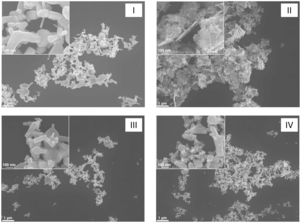Zinc oxide nanoparticle

Zinc oxide nanoparticles are
ZnO nanoparticles are believed to be one of the three most produced nanomaterials, along with
Since ZnO nanoparticles are a relatively new material, there is concern over the potential hazards they can cause. Because they are very tiny, nanoparticles generally can travel throughout the body, and have been shown in animal studies to penetrate the placenta, blood–brain barrier, individual cells, and their nuclei. Tissues can absorb them easily due to their size which makes it difficult to detect them. However, human skin is an effective barrier to ZnO nanoparticles, for example when used as a sunscreen, unless abrasions occur. ZnO nanoparticles may enter the system from accidental ingestion of small quantities when putting on sunscreen. When sunscreen is washed off, the ZnO nanoparticles can leach into runoff water and travel up the food chain. As of 2011 there were no known human illnesses resulting from any engineered nanoparticles.[5]
See also
- ZnO nanostructures
References
- ISSN 2228-5326.
- PMID 26213957.
- S2CID 55419088.
- S2CID 97011693.
- ^ PMID 21356630.
- ISBN 9780323461429
- ^ Noorian, S. A., Hemmatinejad, N., & Navarro, J. A. (2020). Ligand modified cellulose fabrics as support of zinc oxide nanoparticles for UV protection and antimicrobial activities. International journal of biological macromolecules, 154, 1215-1226. https://doi.org/10.1016/j.ijbiomac.2019.10.276
- .
- PMID 26425429.
